Anatomy of a Brilliant Bed Sheet
Here's how to find the very best bed sheets.
To understand what makes a truly brilliant bed sheet you have to delve into the science of fabric production. The fabric and the weave are what make the difference. Here's why.
Long Fibres:-
Long is better than short. Long fibre cotton can be spun into stronger, finer yarns, producing smooth and supple weaves. And stronger and supple weaves mean longer lasting bedding.

Shorter fibres can stick out of the weave, causing weaker and coarser fabric. That's not what you want.
Single Ply Yarn:-
Single-ply yarn produces the finest, strongest threads. It can only be spun from long-fibre cotton, resulting in a light, soft, yet extremely long-lasting sheets.
Multi-ply yarns are a group of weaker fibres twisted together. They use mostly lower-grade, shorter cotton, resulting in thicker, coarser and heavier threads.

Fine Threads:-
The fine thread spun from single-ply, long-fibre cotton is responsible for the most sumptuous sheets. The finer the thread, the smoother, lighter and softer the resulting fabric.

By using bedding made from single-ply, long-fibre cotton, you'll be sleeping in the finest material available for cotton bedding.
Thread Count:-
Thread count is the number of threads woven together in a square inch of fabric. As the thread count rises, the fabric becomes softer, denser and warmer.

A higher thread count does not necessarily mean a higher quality sheet. Thread counts advertised more than 500 are often misrepresented by manufacturers to create a perception of higher quality. They count not just each thread, but each ply spun together within each thread. As multi-ply construction is often used to strengthen lower-grade cotton, a super high thread count can indicate the presence of a lower-quality sheet.
It's what goes into making the fabric that matters most.
Weaves:-
The weave of fabric ultimately affects how it looks and feels. Weaves are what gives sheets their different textures.
Percale Weave:

Percale is a traditional one-yarn-over and one-yarn-under weave. It produces a matte finish with a cool, crisp feel. Its exceptional softness and durability mean it gets better with every wash, without pilling (pilling is those small balls of fluff). It’s lightweight and breathable, making it especially perfect for the summer months or warmer sleepers.
Sateen Weave:

Sateen is a one-yarn-under and three-yarn-over weave. This results in more thread surface being exposed by the three-over, one-under weave. That is what gives sateen its signature silky-soft feel and a luminous sheen. Sateen is more tightly woven and heavier in weight than Percale, making it warmer and softer. Ideal for year-round comfort.
FAQS
What thread count is best for sheets?
Don't be fooled by thread count. Inferior bed sheets can have very high thread counts due to the use of poor quality yarn. Some manufacturers count not just each thread, but each ply spun together within each thread. As multi-ply construction is often used to strengthen lower-grade cotton. A super high thread count can indicate the presence of a lower-quality sheet. What matters is the the quality of the yarn. In consumer tests, the best rated bed sheets are often found in the 300 to 500 thread count range.
Are higher thread count sheets better?
The simple answer is no. It is the quality of the thread that counts. Some manufacturers count the ply and not single threads to derive the thread count giving the appearance of high quality. Remember high thread count doesn't indicate high quality.
What are the qualities of a good bed sheet?
Focus on the fibre content. Look for 100% cotton construction and consider the premium “long-staple” cottons, such as Egyptian and Supima, that make the fabric even softer and more durable. Also consider bamboo fibre sheets that are growing in popularity. Good quality fabric lasts longer, washes and irons better, and is more comfortable.



